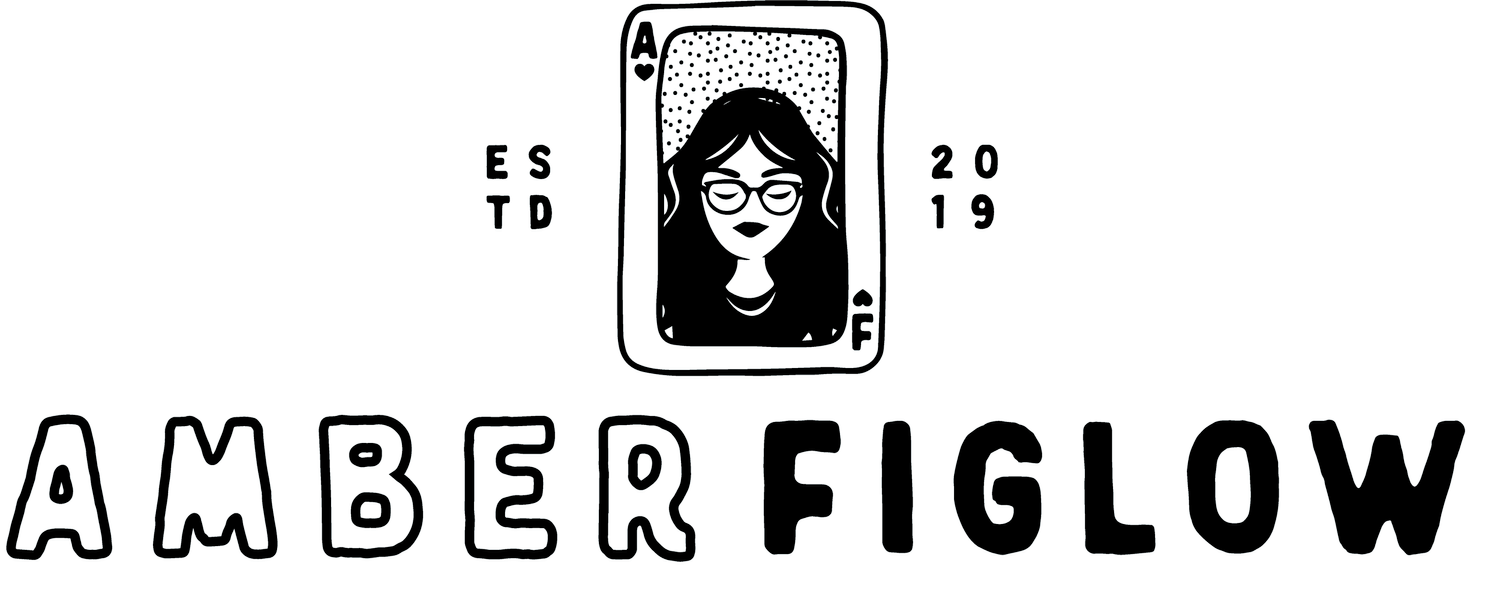EP. 027 |The "Holy Trinity" of Content Marketing for Your Small Business
Podcast Summary
In this episode, I spill the beans on a simple yet powerful marketing formula for small businesses. I break down the three key elements you need to focus on: short-form content, long-form content, and email marketing. You'll learn why each piece matters and how they work together to boost your online presence. I share tips on choosing the right platforms, creating content that resonates, and building an email list that converts. Whether you're just starting out or looking to level up your marketing game, this episode is packed with actionable advice to help your business thrive.
Episode Highlights
00:36 Choose a "short-form" platform
03:48 Choose a "long-form" platform
06:55 You Need an Email List No Matter What
resources + tools
Flodesk (email marketing platform) - https://flodesk.com/c/AI7TUX
The Content System - https://www.amberfiglow.com/thecontentsystem
The Ultimate Content Marketing Formula for Marketing Your Small Business
Discover “The Holy Trinity” approach to content marketing that will revolutionize your online presence and drive growth
As a small business owner, I know firsthand how overwhelming it can feel to market your business online. With so many platforms and strategies to choose from, it's easy to get lost in the digital noise. But after years of trial and error, I've developed a simple yet powerful formula that has transformed my approach to content marketing. Today, I'm sharing this game-changing strategy with you.
The Three Pillars of Effective Content Marketing
My formula revolves around three key elements: short-form content, long-form content, and email marketing. By balancing these three pillars, you'll create a robust online presence that attracts, engages, and converts your ideal customers. Let's dive into each component and explore how they work together to boost your small business.
Short-Form Content: Your Gateway to Quick Engagement
In today's fast-paced digital world, capturing attention quickly is crucial. That's where short-form content comes in. Platforms like Instagram, TikTok, and Twitter offer the perfect playground for bite-sized content that can make a big impact.
I love short-form content because it's often the easiest to create. You don't need fancy equipment or hours of preparation. A smartphone and a few minutes of your time can be enough to connect with your audience.
When choosing a short-form platform, consider two key factors. First, where does your ideal audience hang out online? Are they scrolling through Instagram reels or watching TikTok videos? Second, what type of content do you enjoy creating? If you're camera-shy, maybe Twitter's text-based format is more your speed.
Remember, the goal of short-form content is to build brand awareness and engage with your audience quickly. It's perfect for sharing quick tips, behind-the-scenes glimpses, or responding to trending topics in your industry.
Long-Form Content: Establishing Authority and Trust
While short-form content is great for quick hits, long-form content is where you really get to shine as an expert in your field. This could be YouTube videos, podcast episodes, or in-depth blog posts like this one.
Long-form content serves a different purpose than its shorter counterpart. It's about building credibility, showcasing your expertise, and providing real value to your audience. When someone watches a 15-minute YouTube video or reads a comprehensive blog post, they're investing their time in you. That investment can lead to stronger connections and, ultimately, more loyal customers.
One of the biggest benefits of long-form content is its staying power. A well-optimized YouTube video or blog post can continue to attract new audience members for months or even years after you publish it. It's like having a tireless salesperson working for you 24/7.
When deciding on your long-form platform, consider your strengths and your audience's preferences. If you're comfortable on camera, YouTube might be your best bet. If writing comes naturally to you, blogging could be your path to success.
Email Marketing: Your Direct Line to Customers
Now, I know what you might be thinking. "Email marketing? Isn't that old news?" Trust me, I've heard it all before. But here's the truth: email marketing is still one of the most effective tools in your digital marketing arsenal.
Why? Because email gives you a direct line to your audience. Unlike social media platforms where you're at the mercy of ever-changing algorithms, your email list is yours. Those are people who have actively chosen to hear from you.
Starting an email list might seem daunting, especially if you're new to business. But it's simpler than you might think. Begin by choosing an email marketing platform - I personally recommend Flodesk, but there are many great options out there.
Next, create a compelling lead magnet. This could be a free guide, a checklist, or even a short video course. The key is to offer something valuable enough that people are willing to exchange their email address for it.
Once you've started building your list, focus on providing consistent value. Share insights, offer exclusive content, and yes, promote your products or services when appropriate. The beauty of email marketing is that it allows you to nurture relationships over time, turning casual readers into dedicated customers.
Bringing It All Together: Your Content Marketing Symphony
Now that we've explored each element of the formula, let's talk about how they work together. Think of your content marketing strategy as a symphony. Each instrument (or in this case, each platform) has its own unique sound, but when played together, they create something truly beautiful.
Your short-form content acts as a hook, drawing people in with quick, engaging snippets. It's perfect for reaching new audiences and staying top-of-mind with existing followers.
Your long-form content provides depth and substance. It's where you can really dive into topics, showcasing your expertise and providing real value to your audience. This builds trust and positions you as an authority in your field.
Finally, your email marketing ties it all together. It's where you can nurture relationships, share both short and long-form content, and guide your audience towards becoming paying customers.
The key to making this formula work is consistency and integration. Share snippets of your long-form content on your short-form platforms. Use your email list to drive traffic to your latest blog post or YouTube video. Let each platform support and amplify the others.
Overcoming Common Challenges
I know what you're thinking. "This sounds great, but I don't have time to create content for all these platforms!" I get it. As a small business owner, time is your most precious resource.
Here's the good news: you don't have to do it all at once. Start with one platform in each category. Maybe that's Instagram for short-form, a blog for long-form, and a simple welcome sequence for your email list.
As you get comfortable with your initial platforms, you can expand. The key is to start small and build consistently. Remember, it's better to show up regularly on a few platforms than to spread yourself too thin trying to be everywhere at once.
Another common challenge is coming up with content ideas. My advice? Listen to your audience. What questions are they asking? What problems are they facing? Your content should aim to solve these issues. When you focus on providing value, the content ideas will flow more easily.
Your Path to Content Marketing Success
Remember, successful content marketing isn't about having the most followers or creating the flashiest content. It's about consistently showing up for your audience, providing value, and building genuine connections.
By implementing this three-pronged approach - short-form content, long-form content, and email marketing - you're setting yourself up for long-term success. You're creating a robust online presence that will attract, engage, and convert your ideal customers.
So, where will you start? Pick one platform in each category and commit to showing up consistently for the next 30 days. I promise you'll be amazed at the results. Your future self (and your business) will thank you for taking this step towards content marketing success.

